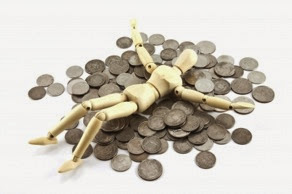The US dollar remains firm following the much stronger than expected service PMI yesterday, heightened concerns around Ukraine and uninspiring European data.  The US 10-year yield is off a few basis points to 2.45%. Recall that at the end of July, it had briefly yielded more than 2.60%.  Since late May, the yield has held above 2.43%. Â
However, despite the drop in yields, and the weakness in the equity markets, the dollar is thus far holding up better than one might have expected against the yen.  Thus far this week, the greenback has been confined to last Friday’s range. The dollar’s low was around JPY102.35.  Â
Even though speculative community has built a large short euro position, participants continue to sell into upticks. Resistance is seen near $1.3380 and then $1.3410. On the downside, there seems little preventing a near-term move toward $1.3300. On the eve of the ECB meeting, data disappointed. The disappointment was two-fold.Â

First, German manufacturing orders fell 3.2% in June. It is the largest decline since September 2011. The consensus had forecast a 1.0% rise after a 1.6% decline in May. The year-over-year rate slumped to -2.4%, the first contraction since last May. The report warns that the euro area locomotive ended Q2 on a weak note, and that to the extent that orders are a leading indicator, suggests Q3 may be poor as well. The Bundesbank has already warned that the economy stalled in Q2. Â
Foreign orders were off 4.1%. Some, including the German Economic Ministry are linking this to sanctions on Russia. It is possible, but it strikes us as a bit unlikely to have much impact yet, though as the Ministry noted it could lead to a “clear reticence in orders” in the coming months. However, more attention should, arguably be given to the 10.4% decline in orders from the euro area. At the same time, it is not simply foreign demand, but domestic orders fell 1.9%.Â

